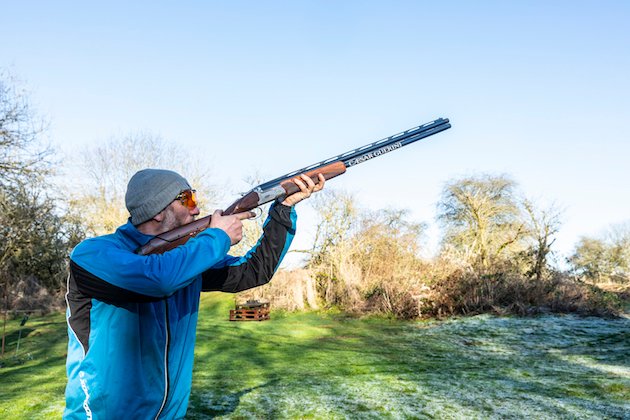Master How to Score Sporting Clays Like a Pro Today
Introduction
Clay target shooting is a thrilling and skillful sport that combines precision, focus, and technique. Whether you’re new to the sport or aiming for a competitive edge, knowing how to score clay target shooting is crucial. In this guide, we’ll explore everything you need to know about scoring in clay target shooting, including the different shooting disciplines, scoring systems, and common mistakes to avoid.
What is Clay Target Shooting?
Clay target shooting is a competitive sport where participants shoot at flying targets, typically made of clay, using shotguns. These targets are launched into the air, and shooters must break them by shooting them while they are still airborne. There are several variations of this sport, each with its own rules and scoring methods.

Types of Clay Target Disciplines:
- Trap Shooting: Intrap shooting, targets are launched from a single trap house in front of the shooter. The target flies in different directions and at varying speeds.
- Skeet Shooting: Skeet involves two target houses (high and low) that throw targets in different directions at various speeds, requiring shooters to adapt quickly.
- Sporting Clays: This discipline mimics real-world hunting conditions, with targets thrown in unpredictable paths, simulating birds and other wildlife. It often includes various shooting stations.
Each discipline has its own scoring system, making it essential to understand how to properly track your hits and misses.
The Scoring System in Clay Target Shooting
Scoring in clay target shooting is relatively straightforward but requires attention to detail. At its core, shooters receive points for hitting targets and deductions for misses. However, the rules and systems can vary based on the shooting discipline.
Key Terms in Scoring:
- Hit: The target is successfully broken by the shooter.
- Miss: The shooter fails to hit the target.
- Dead: A hit target that is visibly broken in mid-air.
- Lost: A target that is not broken, often due to a missed shot.
Scoring Trap Shooting
In trap shooting, the targets are launched from a single house in front of the shooter, but their direction and speed vary with each shot. Shooters typically get a set number of attempts per round, and the goal is to break as many targets as possible.
Trap Shooting Scoring Breakdown:
- A perfect score in trap shooting is typically 25 hits in a row, with each round consisting of 25 targets.
- Shooters often compete in multiple rounds. For example, in a standard competition, a participant might shoot five rounds, with each round offering 25 targets for a total of 125 targets.
- Scoring trap targets: If a shooter breaks the target, it is marked as a hit, otherwise, it is marked as a miss.
Example:
- Round 1: 25 targets shot, 22 hits, 3 misses = 22/25
- Round 2: 25 targets shot, 20 hits, 5 misses = 20/25
At the end of the competition, the scores are tallied up, and the shooter with the most hits wins.
Scoring Skeet Shooting
In skeet shooting, the targets are launched from two houses — one positioned high and the other low — and the targets travel at high speeds across various angles. Shooters must be quick and accurate as the targets fly in unpredictable directions.
Skeet Shooting Scoring Breakdown:
- The total number of targets is usually 25 per round, but shooters rotate between eight different stations, each requiring different shot angles.
- A perfect score in skeet shooting is 25/25, which is extremely difficult to achieve.
- The scores are recorded on a scorecard and generally reflect the number of targets broken.
Example:
- Station 1: 3 targets shot, 3 hits = 3/3
- Station 2: 3 targets shot, 2 hits = 2/3
- Station 3: 3 targets shot, 1 hit = 1/3
- Total score: 6/9 (after completing all stations)
Factors affecting scoring in skeet include:
- The angle and height of the target.
- The shooter’s position and timing.
Scoring Sporting Clays
Sporting clays offers the most variety in terms of scoring and target types. Shooters encounter different targets that simulate real-world hunting situations, such as flying birds or running targets.
Scoring Sporting Clays:
- Typically, a sporting clays competition consists of 100 targets shot across different stations, each presenting a unique challenge.
- Like trap and skeet, shooters are awarded a point for each target they break, but because the targets vary significantly, scoring in sporting clays is slightly more complex.
- A perfect score in sporting clays is 100/100, but achieving this is rare due to the complexity of the course.
Example:
- Station 1: 5 targets shot, 5 hits = 5/5
- Station 2: 5 targets shot, 3 hits = 3/5
- Total score after 10 stations: 8/10
Understanding Different Scoring Methods
There are two primary ways to score clay target shooting: manual scorecards and electronic scoring systems.
Manual Scoring vs. Electronic Scoring Systems
- Manual Scoring: Shooters or scorekeepers record each shot on a scorecard. This is the traditional method and is often used in smaller, informal events.
- Electronic Scoring Systems: These systems use sensors and technology to detect when a target is broken. They offer real-time scoring updates, reducing human error and ensuring greater accuracy in high-stakes competitions.
| Scoring Method | Advantages | Disadvantages |
| Manual | Simple, no technology required | Prone to human error, slower results |
| Electronic | Faster, accurate, real-time updates | Requires equipment, can be costly |
For most beginners, manual scoring is sufficient, but for competitive shooters, especially in large tournaments, electronic scoring is the most efficient way to track results.
Common Scoring Errors and How to Avoid Them
While scoring clay target shooting may seem simple, there are several common mistakes that can affect accuracy.
Common Scoring Mistakes:
- Misunderstanding terminology: For example, mistaking a “Dead” target for a “Lost” target.
- Incorrectly marking hits or misses: It’s easy to forget to mark a miss or accidentally mark a hit when the target was not broken.
- Not tracking partial hits: In some cases, a target may be partially broken, but the scoring rule may specify that it needs to be fully broken to count as a hit.
Tips to Avoid Scoring Errors:
- Always double-check your scorecard after each round.
- If you’re unsure whether a target was broken, consult with your fellow competitors.
- Use electronic scoring when available to reduce the likelihood of errors.
Clay Target Shooting Tournaments: How Scoring Impacts Rankings
In competitive clay target shooting, your score determines your ranking, and how you perform against other shooters is key.
Key Points:
- Ranking: Shooters are ranked based on the total number of hits.
- Elimination rounds: Some competitions use elimination rounds, where the lowest scores are eliminated after each round.
- Tiebreakers: In case of a tie, additional rounds may be used to determine the winner, with scoring continuing as usual.
Score Tracking Tools for Clay Target Shooters
In today’s digital world, there are several tools available to help shooters track their scores. These tools can provide real-time updates and advanced analytics to help shooters improve their game.
Recommended Tools:
- Clay Target Apps: Apps like ShotgunScore allow shooters to track their scores over time, set goals, and review their progress.
- Digital Scoreboards: Many professional events use digital scoreboards, which update in real-time, ensuring transparency and reducing manual errors.
Advanced Scoring Techniques for Competitive Shooters
For those aiming to compete at a high level, scoring is more than just tracking hits and misses. Competitive shooters often analyze their scores to identify weaknesses and fine-tune their techniques.
Advanced Scoring Strategies:
- Averaging scores: Keeping track of your average score over multiple competitions helps to spot trends and identify areas for improvement.
- Analyzing round-by-round performance: Reviewing each round helps shooters determine which types of targets they struggle with the most.
FAQs
What’s the difference between “dead” and “lost” targets in scoring?
Dead” refers to a target that is broken mid-flight, while “Lost” indicates a target that was missed entirely.
How do I correct an error in my scorecard during a competition?
If you notice an error, inform the scorer immediately. In most competitions, errors can be corrected before the final scores are tallied.
Can scoring rules differ between shooting clubs or events?
Yes, different events may have slight variations in scoring rules, especially with regards to tiebreakers or specific target types.
How does weather affect the scoring of clay targets?
Weather can impact the speed and flight path of the targets, especially in windy conditions, making scoring slightly more challenging.
Conclusion
Scoring in clay target shooting is more than just recording hits and misses. It involves understanding the nuances of each shooting discipline, using the right tools to track performance, and avoiding common errors. Whether you’re a beginner or a seasoned shooter, mastering the art of scoring can help you become a better competitor and enjoy the sport even more.







